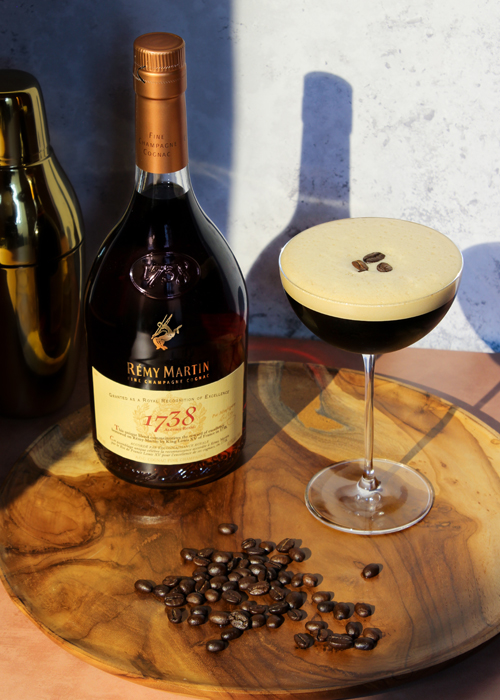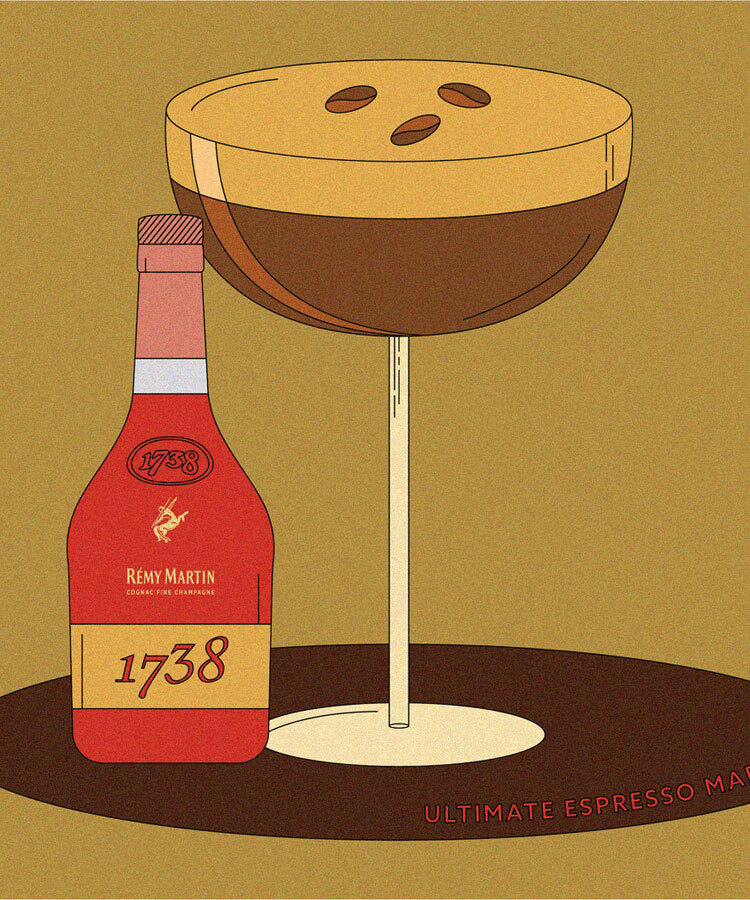
This article is part of a series sponsored by Rémy Martin. Discover Your Cognac Fine Champagne Destination here!
It’s easy to idolize historic periods like the Jazz Age or the go-go ’80s, but not everything was better in the past: In particular, real working knowledge about great drinks has never been more widespread than in our current era. The modern boom of charismatic spirits aged in wood — what some people refer to as “brown spirits” — marks a big step up from the days when the most popular cocktails were made from spirits that were famous for having almost no flavor at all.
While most wood-aged spirits lend themselves to varied styles of drinking, Cognac is one of the most versatile, an insider’s choice for both classic cocktails and contemporary mixology recipes. Thanks to its foundational role during the birth of the cocktail, Cognac remains a less common (but historically accurate) choice for traditional drinks like the Sazerac, which, historians note, was originally made with Cognac, not whiskey.
Madelyn Kay, a bartender and brand ambassador for Rémy Martin’s bartender engagement program, Collectif 1806, says that the same holds true for a slew of historic drinks.
“Many of the classics we know today — the French 75, the Sazerac, the Mint Julep — were actually first made with Cognac before going on to influence generations of bartenders, lending their flavors and methods of preparation to subsequent recipes that are now based with other spirits,” Kay says.
Noble origins
That doesn’t mean that everyone always remembers what Cognac is or its very specific provenance. Unlike whiskey, Cognac is a type of brandy, meaning a spirit made from fruit, not grain — and in this case, the fruits are noble wine grapes. To be labeled as “Cognac,” the spirit can be made only from specific grape varieties — Colombard, Folle Blanche, Montils, Sémillon, Ugni Blanc, and Folignan — that are exclusively grown in the Cognac region of southwestern France, where the growing conditions are famous for yielding grapes with rich aromas. The spirit must be distilled twice in Charentais copper pot stills, an older type of distilling device that is famous for producing artisanal spirits with complex character (though they are certainly less efficient than the more modern column stills used to produce most bourbon, for example). Finally, Cognac must be aged in French oak barrels for at least two years.

“Not only is the terroir of the region highly influential to the grapes that become distilled, but because of the elaborate blending process that follows, Cognac is truly one of the most refined of wood-aged spirits,” Kay says.
Among that refined spirit’s greatest names: Rémy Martin, which produces eaux-de-vie that are revered for their complexity and character. In keeping with this reputation, the flavor profile of Rémy Martin’s 1738® Accord Royal includes rich notes of cooked plums and fig marmalade, toffee, and toasted bread on the nose, with butterscotch, baking spice and hints of dark chocolate in the mouth. The toasted oak barrels that are used to age Rémy Martin 1738 Accord Royal add nutty aromas, a full body, and creamy finish.
A New Level
Such a complex flavor profile as this one can elevate almost any drinking experience, turning a regular mixed drink into a sensory workout. A case in point: the classic Espresso Martini. Invented in the mid-’80s when cocktail wisdom wasn’t quite as widely shared as it is today, the original Espresso Martini played its vodka base to create a buzzy mixed drink with just a touch of creaminess and spice, thanks to its additions of coffee and coffee liqueur. It instantly became a modern classic, beloved by millions.
For a more interesting and refined take on that world classic, try substituting a quality Cognac like Rémy Martin 1738 Accord Royal in place of the original vodka base in the recipe. The rich butterscotch and chocolate notes from the Cognac can interact with the flavors from the coffee and the coffee liqueur in unexpected ways, heightening its fruitiness and notes of baking spice, while creating an even richer mouthfeel and creamier finish. That kind of substitution doesn’t just improve the drink — it elegantly raises it to a new level.
There’s plenty of room for creativity with the remaining ingredients. Different coffee liqueurs all have their own flavor profiles, which can put a spotlight on different characteristics from the Cognac. You’ll find even more variety by working with different kinds of coffee. Want more caramel and brown sugar flavors? Try freshly roasted Jember varietal coffee beans. Want more chocolate notes and richer mouthfeel? Try an heirloom Vietnamese robusta peaberry. Feel like adding a hint of fresh berries? Try the blueberry-forward SL-34 cultivar from Kenya. Even how you prepare your coffee can add a personal touch, just as long as it’s fairly strong. If you don’t have an espresso maker at home or a coffee shop around the corner, try a dose of strongly brewed French press, Chemex, Aeropress, pour-over, or filter coffee. The possibilities are endless.
Terroir to Your Advantage
Using these options in the recipe go way beyond basic Espresso Martinis: A high-grade Cognac like Rémy Martin 1738 Accord Royal can elevate almost any cocktail (though it’s worth remembering that its charismatic flavors and aromas work particularly well in citrus-based drinks, like the Sidecar). Much of that is due to its origin as a Cognac Fine Champagne, a term reserved for Cognacs that are exclusively made from grapes grown in the Grande and Petite Champagne regions, at least half of which must come from Grande Champagne itself. That great sense of terroir and historic provenance has stood behind the spirit since King Louis XV of France granted Rémy Martin his original reward of excellence in the year 1738 — the historic event that gave rise to this expression’s very name.
And who knows? If you practice your craft carefully and really work at taking your mixing skills to the next level, you just might end up with a modern classic all your own.
Remy Espresso Recipe
Ingredients
- 1 ½ ounces Rémy Martin 1738 Accord Royal
- 1 ounce espresso
- ½ ounce coffee liqueur
- ½ ounce simple syrup
Directions
- Fill a cocktail shaker with ice. Add ingredients.
- Shake well for at least 30 seconds.
- Strain, twice, into a cocktail glass.
- Garnish with three whole coffee beans, orange peel, lemon peel, or as desired.
This article is sponsored by Rémy Martin.
